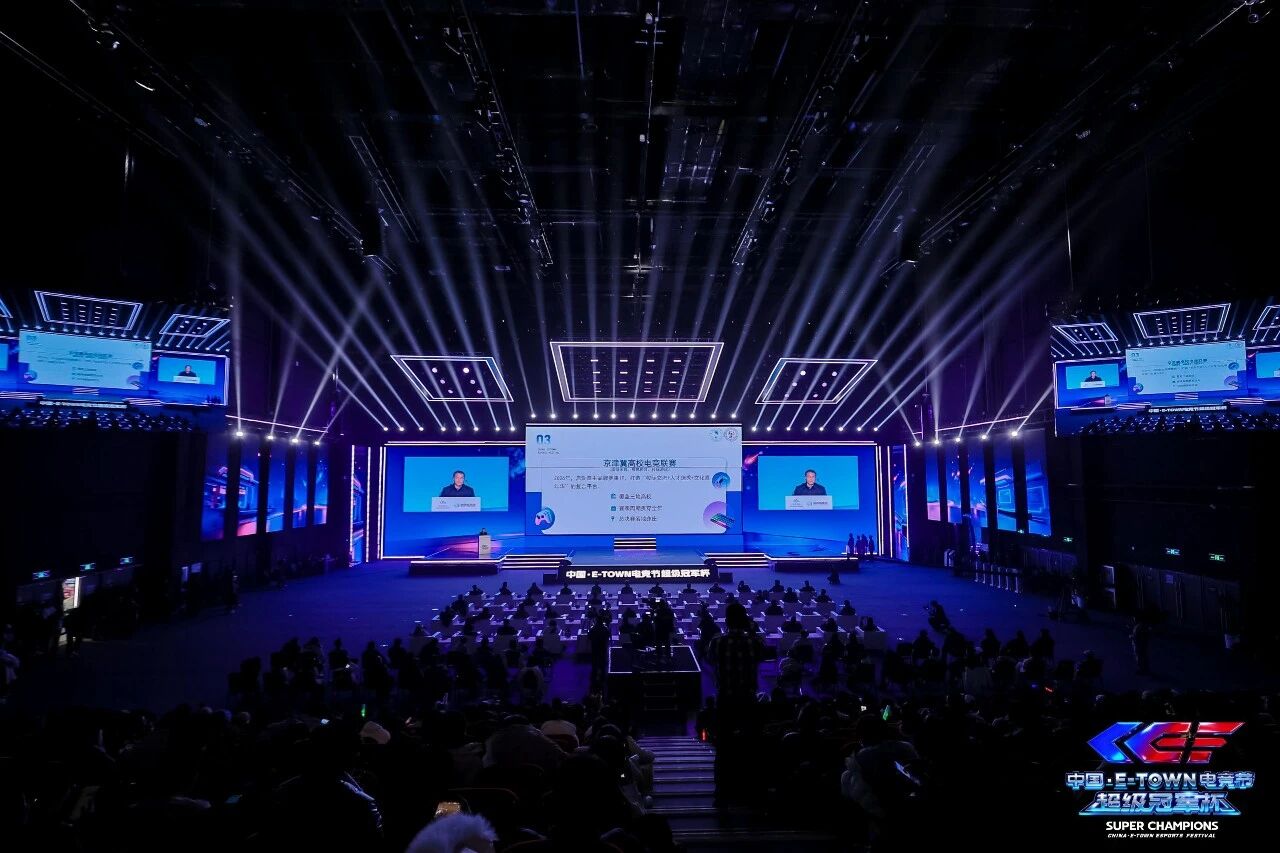What We Are Told and Not Told About the South China Sea
来源:
作者:James O’Neill* 点击:
发布时间:2020-08-10 16:09:35
If war breaks out between China and the United States, there is a high probability that the precipitating factor will be the South China Sea. The United States is currently running another of its so-called “freedom of navigation” exercises in the region, employing no less than two aircraft carriers, together with their supporting armada of warships. The western media regularly report these naval exercises but rarely if ever is the historical situation put into any kind of context.
There are in fact a number of important features of this confrontation between China and the United States that are seldom if ever discussed. A complaint by the Philippines to the Permanent Court of Arbitration received a judgement on 12 July 2016. The court ruled that there was no evidence of China having exercised exclusive control over the sea or its resources at any time. Therefore, the court ruled, there was no legal basis to the so-called “9 Dash Line” that China claimed to be within its exclusive jurisdiction.
China rejected the court’s findings. This was hardly surprising from a purely historical point of view as China is able to demonstrate extensive control over the region going back hundreds of years, as Jianming Shen detailed in a lengthy scholarly analysis back in 2002 (Chinese Journal of International Law 1 (1) 94-157.
But historical situations are often of dubious relevance in the world of modern geopolitics. They are certainly not relevant in helping to understand the attitude and behaviour of the contemporary government in Beijing. But that is only part of the story. Historical precedents are certainly of no interest to the United States and Australia in their pursuit of what they are pleased to call “freedom of navigation” exercises in waters thousands of kilometres distant from their respective borders.
This however, is simply empty verbiage. Neither country is able to point to a single incident of such free passage of civilian ships being in any way hindered. Given that at least 80% of China’s seaborne exports traverse the South China Sea, China of all nations has the greatest interest in unimpeded freedom of passageway.
It would be both illogical and counter-productive for China to engage in any exercise that jeopardised the freedom of passage of civilian ships. Apart from its own vested interest, the South China Sea is the world’s second busiest sea route, with ships from multiple nations taking advantage of its location in proximity to the world’s most important economic region.
There is also the irony, never noted by the western media, of the United States purporting to uphold an important legal principle by an organisation, the International Court on the Rule of the Sea, (UNCLOS) that it itself does not belong to or accept the jurisdiction of over issues the United States regards as vital to its national interests. In short, the purported upholding of the “International rules based legal order” is so much empty verbiage.
As noted, the Chinese have a vested interest in the free movement of civilian ships in the South China Sea. They are not alone in that. Also notably missing from western accounts of the disputes in the South China Sea is the fact that the Chinese claim to sovereignty over a large portion of the region predates the revolution that brought the Chinese Communist Party to power in 1949. The claims were in fact first lodged by the then Nationalist government of China. Equally importantly, and again totally missing from western political and media accounts of the dispute, is the fact that the government of modern-day Taiwan makes exactly the same claims as to its territorial rights over the South China Sea as does the government in Beijing.
An acknowledgement of this fact would of course undermine the “it’s all a Communist plot to bully its neighbours” that the western media is so fond of parroting. One of the islands that Taiwan claims, for example, is located more than 1000 km from the island of Taiwan. It is difficult to perceive a defence-based argument in such a claim.
Without in any way diminishing the historical or strategic interests that the PRC has in the South China Sea there is at least one other reason why the South China Sea is of such immense importance and that is its huge resources of oil and natural gas. It is impossible to believe that the United States is unaware of this resource as a few minutes of research readily reveals the basic facts. It is equally impossible to believe that the United States government does not covet those resources with a firm eye as to its own enrichment and/or that of US dominated companies.
The official estimate of oil reserves was declared in 2013 to be approximately 28 billion barrels of oil which would make it one of the world’s largest, and as yet largely untapped, reserves.
In addition to the oil however, there is also an estimated 266 trillion feet of natural gas also available. These are phenomenal quantities of resources that are very much in demand and likely to remain so for the foreseeable future. The interesting point is that the western media refers to tiresomely regurgitate “freedom of navigation” mantra and completely avoid any mention of these vast resources as a possible motive for western interest.
Yet another international treaty that the United States has declined to ratify is the International Convention on the Law of the Sea (UNCLOS) that provides an internationally recognised mechanism for dealing with any disputes over the utilisation and exploitation of sea-based resources. It is not too difficult to infer a reason for such United States non-participation: they intend to use their economic and military power to bully other nations into acceding to their wishes. One has to wonder, yet again, at the silence of the western media on the obvious self-interest of the United States in attempting to exert control over the South China Sea.
The message does not appear to have penetrated the United States mindset that their days of exerting territorial dominance and plundering the resources of others is over. A symptom of this continuing blindness to modern military reality is manifested in the aforementioned dispatch of two United States aircraft carriers and their associated fleet of support vehicles to the South China Sea. The Chinese are clearly not intimidated by this US show of force.
Again, the message seems not to have penetrated the American mindset. Aircraft carriers are nowadays simply very large seaborne targets. The Chinese defence system, operating as it is from domestic territory, has at its disposal the Dong Feng 21D and Dong Feng 26 missile defence systems, to which United States aircraft carriers are simply a very large and very vulnerable target. They, together with other Chinese defence systems make the United States military presence in the South China Sea a suicide mission.
The 21st century world is a very different place from even two decades ago. China is the world’s dominant economic power, and together with its Russian ally, effectively an unbeatable military power. It is not however, using that military and economic strength to impose its will. Together with its ASEAN colleagues it has been working to resolve disputes such as those arising from competing claims in the South China Sea. There is a very good prospect that disputes over the exploitation of the South China Sea’s immense resources will be resolved sooner rather than later.
What the interested parties don’t need is the unwelcome and self-interested meddling and trouble making of the United States and its “partners” such as Australia.
There are in fact a number of important features of this confrontation between China and the United States that are seldom if ever discussed. A complaint by the Philippines to the Permanent Court of Arbitration received a judgement on 12 July 2016. The court ruled that there was no evidence of China having exercised exclusive control over the sea or its resources at any time. Therefore, the court ruled, there was no legal basis to the so-called “9 Dash Line” that China claimed to be within its exclusive jurisdiction.
China rejected the court’s findings. This was hardly surprising from a purely historical point of view as China is able to demonstrate extensive control over the region going back hundreds of years, as Jianming Shen detailed in a lengthy scholarly analysis back in 2002 (Chinese Journal of International Law 1 (1) 94-157.
But historical situations are often of dubious relevance in the world of modern geopolitics. They are certainly not relevant in helping to understand the attitude and behaviour of the contemporary government in Beijing. But that is only part of the story. Historical precedents are certainly of no interest to the United States and Australia in their pursuit of what they are pleased to call “freedom of navigation” exercises in waters thousands of kilometres distant from their respective borders.
This however, is simply empty verbiage. Neither country is able to point to a single incident of such free passage of civilian ships being in any way hindered. Given that at least 80% of China’s seaborne exports traverse the South China Sea, China of all nations has the greatest interest in unimpeded freedom of passageway.
It would be both illogical and counter-productive for China to engage in any exercise that jeopardised the freedom of passage of civilian ships. Apart from its own vested interest, the South China Sea is the world’s second busiest sea route, with ships from multiple nations taking advantage of its location in proximity to the world’s most important economic region.
There is also the irony, never noted by the western media, of the United States purporting to uphold an important legal principle by an organisation, the International Court on the Rule of the Sea, (UNCLOS) that it itself does not belong to or accept the jurisdiction of over issues the United States regards as vital to its national interests. In short, the purported upholding of the “International rules based legal order” is so much empty verbiage.
As noted, the Chinese have a vested interest in the free movement of civilian ships in the South China Sea. They are not alone in that. Also notably missing from western accounts of the disputes in the South China Sea is the fact that the Chinese claim to sovereignty over a large portion of the region predates the revolution that brought the Chinese Communist Party to power in 1949. The claims were in fact first lodged by the then Nationalist government of China. Equally importantly, and again totally missing from western political and media accounts of the dispute, is the fact that the government of modern-day Taiwan makes exactly the same claims as to its territorial rights over the South China Sea as does the government in Beijing.
An acknowledgement of this fact would of course undermine the “it’s all a Communist plot to bully its neighbours” that the western media is so fond of parroting. One of the islands that Taiwan claims, for example, is located more than 1000 km from the island of Taiwan. It is difficult to perceive a defence-based argument in such a claim.
Without in any way diminishing the historical or strategic interests that the PRC has in the South China Sea there is at least one other reason why the South China Sea is of such immense importance and that is its huge resources of oil and natural gas. It is impossible to believe that the United States is unaware of this resource as a few minutes of research readily reveals the basic facts. It is equally impossible to believe that the United States government does not covet those resources with a firm eye as to its own enrichment and/or that of US dominated companies.
The official estimate of oil reserves was declared in 2013 to be approximately 28 billion barrels of oil which would make it one of the world’s largest, and as yet largely untapped, reserves.
In addition to the oil however, there is also an estimated 266 trillion feet of natural gas also available. These are phenomenal quantities of resources that are very much in demand and likely to remain so for the foreseeable future. The interesting point is that the western media refers to tiresomely regurgitate “freedom of navigation” mantra and completely avoid any mention of these vast resources as a possible motive for western interest.
Yet another international treaty that the United States has declined to ratify is the International Convention on the Law of the Sea (UNCLOS) that provides an internationally recognised mechanism for dealing with any disputes over the utilisation and exploitation of sea-based resources. It is not too difficult to infer a reason for such United States non-participation: they intend to use their economic and military power to bully other nations into acceding to their wishes. One has to wonder, yet again, at the silence of the western media on the obvious self-interest of the United States in attempting to exert control over the South China Sea.
The message does not appear to have penetrated the United States mindset that their days of exerting territorial dominance and plundering the resources of others is over. A symptom of this continuing blindness to modern military reality is manifested in the aforementioned dispatch of two United States aircraft carriers and their associated fleet of support vehicles to the South China Sea. The Chinese are clearly not intimidated by this US show of force.
Again, the message seems not to have penetrated the American mindset. Aircraft carriers are nowadays simply very large seaborne targets. The Chinese defence system, operating as it is from domestic territory, has at its disposal the Dong Feng 21D and Dong Feng 26 missile defence systems, to which United States aircraft carriers are simply a very large and very vulnerable target. They, together with other Chinese defence systems make the United States military presence in the South China Sea a suicide mission.
The 21st century world is a very different place from even two decades ago. China is the world’s dominant economic power, and together with its Russian ally, effectively an unbeatable military power. It is not however, using that military and economic strength to impose its will. Together with its ASEAN colleagues it has been working to resolve disputes such as those arising from competing claims in the South China Sea. There is a very good prospect that disputes over the exploitation of the South China Sea’s immense resources will be resolved sooner rather than later.
What the interested parties don’t need is the unwelcome and self-interested meddling and trouble making of the United States and its “partners” such as Australia.
关于南海,我们知道和不知道的事情
如果中美之间爆发战争,很有可能引发战争的因素将是南海。美国目前正在该地区进行另一次所谓的“航行自由”演习,动用了不少于两艘航空母舰及其配套的军舰舰队。西方媒体定期报道这些海军演习,但很少把历史情况放在任何背景下。
事实上,中美之间的这种对抗有许多重要特征。菲律宾向常设仲裁法院提出的申诉于2016年7月12日获得判决。法院裁定,没有证据表明中国曾在任何时候对该海域或其资源行使专属控制权。因此,法院裁定,中国声称在其专属管辖范围内的所谓“9点划线”没有法律依据。
中国拒绝了法院的裁决。从纯粹的历史角度来看,这并不奇怪,因为中国能够证明几百年前对该地区的广泛控制,正如沈建明早在2002年的一篇冗长的学术分析(中国国际法杂志1 (1) 94-157)中所详述的那样。
但是在现代地缘政治的世界里,历史情况往往是不确定的。在帮助理解北京当代政府的态度和行为方面,它们当然没有什么意义。但这只是故事的一部分。美国和澳大利亚在远离各自边界数千公里的水域进行他们乐于称之为“航行自由”的演习时,肯定对历史先例不感兴趣。
然而,这只是一句空话。这两个国家都无法指出任何一次民用船只自由通行受到任何阻碍的事件。鉴于中国至少80%的海运出口穿越南海,在所有国家中,中国对畅通无阻的通道自由最感兴趣。 中国参与任何危及民用船只通行自由的演习都是不合逻辑的,而且会适得其反。除了自身的既得利益,南海是世界上第二繁忙的海上航线,来自多个国家的船只利用其靠近世界上最重要的经济区域的位置。
具有讽刺意味的是,西方媒体从未注意到,美国声称支持一个组织——国际海洋法法院(UNCLOS)——的一项重要法律原则,即它本身不属于或不接受对美国认为对其国家利益至关重要的问题的管辖权。简而言之,所谓维护“基于国际规则的法律秩序”是一句空话。
如上所述,中国在南海的民用船只的自由流动中拥有既得利益。他们并不孤单。西方关于南海争端的报道也明显忽略了一个事实,即中国对该地区大部分地区的主权主张早于1949年中国共产党掌权的革命。
事实上,这些索赔最初是由当时的中国国民党政府提出的。同样重要的是,也是西方政治和媒体对这一争端的报道中完全没有提到的一个事实,即当代台湾政府对其在中国南海的领土主张与北京政府完全一样。 承认这一事实当然会破坏西方媒体如此喜欢鹦鹉学舌的“这都是共产党欺负邻国的阴谋”。例如,台湾宣称拥有主权的其中一个岛屿位于距离台湾岛1000多公里的地方。在这样的索赔中,很难看到基于辩护的论点。
中国在南海的历史或战略利益丝毫没有减少,但至少还有一个原因说明中国南海如此重要,那就是其巨大的石油和天然气资源。很难相信美国不知道这一资源,因为几分钟的研究就能揭示基本事实。同样不可能相信的是,美国政府对这些资源的觊觎并不是出于对其自身和/或美国主导的公司的致富的关注。
官方估计的石油储量在2013年被宣布为大约280亿桶石油,这将使其成为世界上最大的,但尚未开发的储量之一。
然而,除了石油,估计还有266万亿英尺的天然气。这些资源数量惊人,需求量很大,而且在可预见的未来可能会继续如此。有趣的是,西方媒体不厌其烦地重复着“航行自由”的咒语,完全避免提及这些巨大的资源作为西方利益的可能动机。
美国拒绝批准的另一项国际条约是《国际海洋法公约》(UNCLOS),该公约为处理有关利用和开发海洋资源的任何争端提供了一个国际公认的机制。不难推断美国不参与的原因:他们打算利用他们的经济和军事力量来胁迫其他国家同意他们的愿望。人们不得不再次对西方媒体对美国试图控制中国南海的明显私利保持沉默感到惊讶。 这一信息似乎并没有渗透到美国的思维中,即他们行使领土优势和掠夺他人资源的日子已经结束。
这种对现代军事现实持续视而不见的一个症状表现在前面提到的向中国南海派遣两艘美国航空母舰及其相关的支援舰队。中国人显然没有被美国的这一武力展示吓倒。 同样,这个信息似乎没有渗透到美国人的思维中。航空母舰现在只是非常大的海上目标。中国的防御系统是从国内领土运作的,拥有东风21D和东风26导弹防御系统,而美国的航空母舰是非常大和非常脆弱的目标。他们与中国的其他防御系统一起,使美国在南海的军事存在成为一项自杀性任务。
21世纪的世界与二十年前已经大不相同了。中国是世界上占主导地位的经济大国,与其俄罗斯盟友一起,实际上是一个不可战胜的军事大国。然而,它并没有利用这种军事和经济力量来强加其意志。它与东盟的同事们一直在努力解决争端,比如因中国南海的主权争议而产生的争端。开发中国南海丰富资源的争端很有可能会尽快得到解决。
相关方不需要的是不受欢迎的、自私自利的美国及其“伙伴”,如澳大利亚的干涉和制造麻烦。
(作者是律师和政治分析师 James O’Neill)
版权及免责声明
1、本网转载媒体稿件旨在传播更多有益信息,并不代表同意该观点,本网不承担稿件侵权行为的连带责任;
2、在本网博客/论坛发表言论者,文责自负。
推荐文章
热点内容
-
 百集访谈栏目《健康大讲堂》地龙与
健康源于生活、健康在于习惯、健康贵于坚持。欢迎走进百集电视杂志《健康大讲堂》,今天我们要聊的这味中药材,大家可能在田间地头见过,却未必知道它是守护健康的“宝贝”
百集访谈栏目《健康大讲堂》地龙与
健康源于生活、健康在于习惯、健康贵于坚持。欢迎走进百集电视杂志《健康大讲堂》,今天我们要聊的这味中药材,大家可能在田间地头见过,却未必知道它是守护健康的“宝贝”
-
 CECTV《声起东方》全球中文经
制片主任:李敏
CECTV《声起东方》全球中文经
制片主任:李敏
- ・《少林点穴的隐秘力量》纪录片在郑州圆满杀青
- ・2025GT世界挑战赛北京亦庄站启幕
- ・北京市侨联召开海外北京会座谈交流会
- ・2025GT世界挑战赛北京亦庄站圆满落幕
- ・短片【未封存的岁月日记】的时代意义
- ・侨智未来·创新人才发展活动举办
- ・2025GT世界挑战赛北京亦庄站筹备进入冲刺阶段
- ・无锡味道 世界共享LA LISTE 2025全球美食
- ・2025“校园星主播”国际展演(韩国站)圆满结束
- ・“勇气少年团”综艺节目开始选拨啦
- ・CECTV《声起东方》全球中文经典朗读节目
- ・美国迈阿密大学访问学者项目
- ・2012第二届中国国际积极心理学大会
- ・首届世界香具文化大会暨高峰论坛在浙江龙泉圆满召开
最新文章
- ・百集访谈栏目《健康大讲堂》地龙与健康第二期 曾耀辉张
- ・安哥拉独立50周年招待会在京举行
- ・2025中国・E-TOWN电竞节超级冠军杯启幕北京亦
- ・“英雄·先锋”抗战老兵肖像展在中财大开幕 融合式思政
- ・丝路集团董事长闫立金应邀出席马哈拉尼自贸港启动仪式
- ・丝路集团携手PIKOM发起马中数字经济联盟 赋能RC
- ・PIKOM LEAD峰会吉隆坡盛大启幕 丝路集团以核
- ・2025 AI园长大会落幕青岛,千余幼教智师共探育人
- ・中华福文化国际交流盛典暨《金丝宫韵·大吉福禄瓶》全球
- ・2026创新国乐第二季“中国神话·岁启新春” 全球原
- ・CECTV《声起东方》全球中文经典朗读节目
- ・“勇气少年团”综艺节目开始选拨啦
- ・2025“校园星主播”国际展演(韩国站)圆满结束
- ・首届世界香具文化大会暨高峰论坛在浙江龙泉圆满召开
- ・2012第二届中国国际积极心理学大会
- ・美国迈阿密大学访问学者项目










